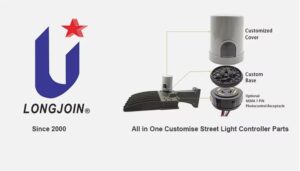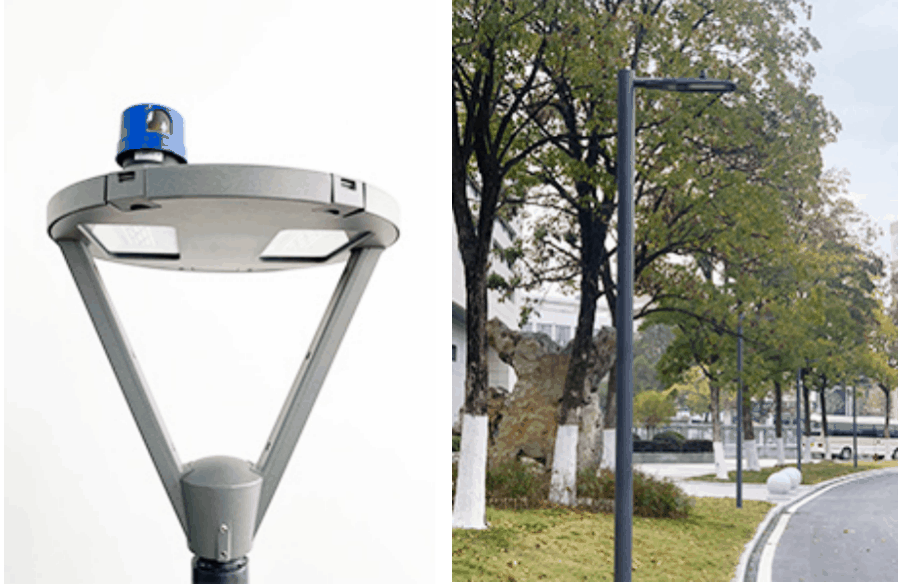Outline
- Introduction
- How Does Zero-Crossing Control Technology Work, and Why Is It a Game Changer for Dimming Precision?
- How Does Reflection Compensation Prevent Misjudgment in Light Detection?
- What Happens When Zero-Crossing Control and Reflection Compensation Work Together?
- The Bottom Line

In today’s smart lighting systems, precision matters more than ever. Reliability is equally important. Street lights must adjust to changing conditions. They also need to reduce energy waste and light pollution.
Zero-cross control and reflection compensation make this possible. These technologies boost photosensor performance. They improve dimming accuracy and stop false triggers from reflected light.
LongJoin uses both features in its photo controllers. The result is intelligent, stable, and efficient lighting control. This fits perfectly with the needs of modern urban environments.
How Does Zero-Crossing Control Technology Work, and Why Is It a Game Changer for Dimming Precision?
Principle of Zero‑Cross Control
Zero-cross control operates based on the behavior of alternating current (AC). In an AC cycle, the voltage waveform crosses zero twice, once every half-cycle. These zero points are where the voltage is exactly 0 volts for a split second.
Light sensors using zero-cross control detect this moment with high accuracy. Once detected, the internal circuit triggers the power switch—usually a relay or TRIAC—only at that instant. At this point, the current flow is minimal or zero.
This reduces electrical noise and prevents sudden inrush currents. Switching at non-zero points can cause arcing, surge stress, and EMI. But triggering at the zero-cross eliminates these risks.
In TRIAC-based dimming circuits, this ensures smooth phase control. It also helps maintain waveform integrity, which is critical for LED drivers and ballasts. The result is quieter, longer-lasting, and more stable lighting control.
Advantages of Zero‑Crossing Control Technology
- Stable dimming: No flicker or pop when switching, thanks to smooth zero‑voltage events.
- Lower EMI: Turning on at zero‑cross greatly reduces interference.
- Extended contact life: Fewer voltage spikes mean less arcing and wear.
- Better energy efficiency: Less wasted power during switching transitions.
- Improved compatibility: Works reliably with LED loads and electronic ballasts.
How Does Long Join JL207C Use Zero‑Cross Control

The JL‑207C offers optional zero‑cross switching. It triggers the internal relay or TRIAC exactly at the AC zero. This reduces inrush stress on contacts and the light source. It extends relay life past 10,000 cycles. By lowering EMI and arcing, JL‑207C boosts system stability and meets ANSI/UL standards. Its low quiescent draw (0.5 W standard, 0.9 W HP) helps cut standby energy use. Here is a detailed table of the technical specifications of JL207C.
| Feature | Specification | Feature | Specification |
| Rated Voltage | 110–277 VAC | Operating Voltage | 105–305 VAC |
| Frequency | 50/60 Hz | Load Capacity | 1000 W tungsten; 1800 VA ballast |
| Power Consumption | 1.5 VA | On/Off Levels | 6 Lx ON; 50 Lx OFF |
| Time Delay | 0–20 s adjustable ON‑delay; 5–20 s OFF‑delay | Ambient Temp Range | –40 °C to +70 °C |
| Surge Protection | MOV options: 110 J/3500 A, 235 J/5000 A, 460 J/10 kA | Sensor Types | CdS cell, IR‑filtered or unfiltered phototransistor |
| Dimensions | Ø84 mm × 66 mm | Weight | ~85 g |
How Does Reflection Compensation Prevent Misjudgment in Light Detection?
What is Reflection Compensation Technology?
Reflection compensation is a circuit-level adjustment in the photocontrol receptacles. It helps distinguish between direct ambient light and reflected light. The system uses signal filtering and optical algorithms to avoid false triggers.
It works especially well in outdoor settings where glass, metal, or water reflects light back.
Reflection Compensation Feature: Preventing Misjudgment
Lighting controls measure the surrounding light intensity to control on/off cycles. Reflected light can distort this reading, creating inaccurate dusk/dawn detection. This leads to premature shut-off or delayed lighting activation.
Reflection compensation analyzes incoming light signals in real time. It subtracts reflected peaks using calibration and sensor positioning. Here are some of its primary benefits:
- This tech is a direct fix.
- It ignores shiny surfaces and transient glare.
- False “daytime” triggers are eliminated.
- Lighting remains on until true twilight arrives.
LongJoin JL-7X1A and JL-7X2A Series: Intelligent Integration

These models integrate both reflection compensation and zero-cross control. The JL-7X1A and JL-7X2A use smart sensors to filter false light readings. They also switch precisely at the AC zero-cross to avoid surges and flicker. This dual-layer control ensures accurate on/off timing and stable dimming.
Ideal for reflective urban zones, like glass buildings, parking lots, and waterfront roads. They deliver high reliability, longer life, and reduced energy waste. Based on LongJoin’s official Zhaga Book-18 product announcement and related documentation, below given are detailed specifications of JL-7X1A and JL-7X2A.
| Feature | JL‑7X1A & JL‑7X2A Zhaga Controllers |
| Interface Standard | Zhaga Book‑18 socket/controller assembly |
| Waterproof Rating | Controller IP66; socket IP20 (no controller) |
| Power Supply | 12–24 V DC from driver via Zhaga pins |
| Dimming Output | DALI 2.0, 0–10 V, 1–10 V, PWM |
| Sensing Types | Ambient light, PIR, microwave |
| Comm Protocols | BLE, Wi‑Fi, ZigBee, LTE, NB‑IoT, LoRa, Z‑Wave options |
| Microwave Frequencies | JL‑7X1A: indoor 5.8 GHz @ 5 m; JL‑7X2A: outdoor 5.8 GHz @ 15 m |
| Midnight Dimming | JL‑7X1A supports; JL‑7X2A outdoor focus |
| Socket Material | PBT for Zhaga base; transparent PC cover |
| Install Flexibility | 360° twist-lock, installation top/side/bottom |
What Happens When Zero-Crossing Control and Reflection Compensation Work Together?
Solving Light Pollution in Complex Urban Environments
Zero-crossing + reflection compensation enables precise streetlight dimming by detecting true ambient light. This combo reduces unnecessary light output, cutting skyglow and glare. LongJoin controllers fine‑tune brightness based on real illumination, not faulty reflected peaks.
They dim when true dusk arrives and limit intensity to standardized levels. This avoids over‑illumination and curbs light pollution in cities with reflective surfaces.
LongJoin models also integrate clean switching (via zero‑cross) to prevent abrupt on/off surges. This smooth operation reduces upward stray light and maintains stable nocturnal lighting patterns.
Intelligent Control for Extreme Weather Conditions
Cold or heat stress can alter sensor timing and switch response in harsh weather. Zero‑cross control ensures trigger timing remains accurate despite temperature swings. Reflection compensation adjusts for temporary light boosts caused by snow or rain reflection. Wet roads and drizzle reflect ambient light; uncompensated sensors misread them as daylight.
LongJoin units maintain light during heavy rain or snowfall until real daylight returns. This guarantees consistent nighttime lighting, regardless of transient environmental factors.
The Bottom Line
Zero-crossing and reflection compensation technologies are changing how we control street lighting. They offer better stability, energy savings, and precise response in real-world conditions. For reliable performance, Chi-Swear is your trusted source for authentic LongJoin photocells.






